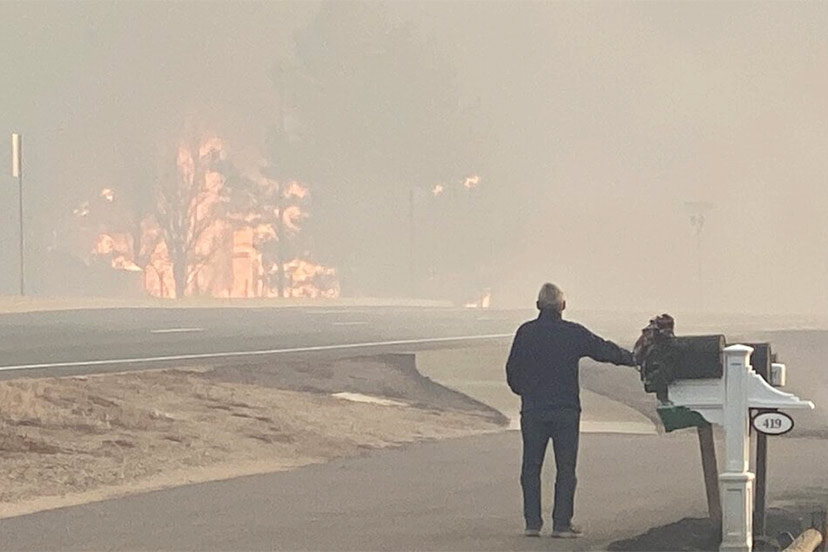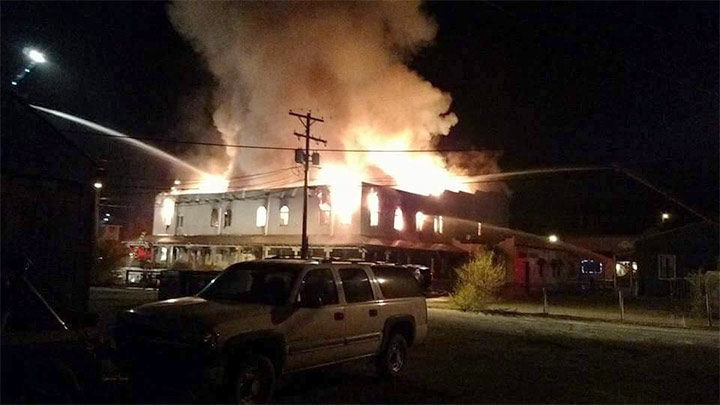The Pagosa Area Water and Sanitation District (PAWSDboard meetings don’t typically attract much of an audience, so I was surprised, walking into last night’s meeting, to see more than a dozen people in the audience.
Had they come to protest the inclusion of the ‘Pagosa Views’ subdivision into the District? That inclusion request was one of the numerous items on the agenda.
Turned out, nearly the entire audience had come to participate in a different discussion: the ‘noticed’ public hearing on a proposed $38 million loan to help fund a $44 million water treatment plant on Snowball Road. The existing treatment plant at that location, built in the 1980s, had reached the end of its useful life — we were told — and the new plant would be more efficient, and able to treat twice the amount of drinking water.
In the off chance that Pagosa Springs will double in size, at some point in the future?
Disclosure: I currently serve on the Pagosa Area Water and Sanitation District (PAWSD) board of directors, but this editorial reflects only my own personal opinions, and not necessarily those the PAWSD board as a whole.
The PAWSD board did not vote to approve the $38,444,000 loan at last night’s meeting. But we did listen to the report from the engineers explaining why this project was so expensive, and we did hear some clarifications from the proposed contractor for the project.
We also heard that the new federal infrastructure funding might help pay for the project. The eligibility for that federal money has not yet been defined by EPA.
We were told that the ‘maximum’ increase to a typical family’s water bill, resulting from this project, would be an $8 a month increase. PAWSD board member Glenn Walsh suggested that a fair portion of the cost, for this much-larger treatment plant, could be borne by the future development that threatens to double our population. Those financial contributions could come through ‘inclusion fees’ and other connection fees, he noted.
PAWSD District Manager Justin Ramsey agreed that there are numerous ways to collect money for a $38 million loan. PAWSD is planning to do a ‘rate study’ next year, and this new loan — with its debt service of $1.9 million per year for 30 years — will be part of the calculations.
According to my pocket calculator, an annual payment of $1.9 million, over 30 years, adds up to $57 million.
As I said, the board did not vote on this loan last night, although it feels to me like a done deal, with the design work for the new plant already 90% complete, and the proposed contractor already calculating the amount of per diem that will be paid out to perhaps 20 employees, at a rate of about $200 per day.
The contractor is assuming that most of the workers — maybe all — will need to be imported. Where exactly they will live is not immediately clear.
Another thing that didn’t happen last night. The board did not vote on the inclusion of the proposed ‘Pagosa Views’ subdivision. We did not yet have the final report from running the ‘water model’ — the computer program that helps define how much water would be required by a proposed 80-acre subdivision — with maybe 650 dwelling units and perhaps 140 lodging units, and a swimmming pool, and other amenities.
Are the pipes leading down Put Hill big enough? Is there enough water pressure? Are the PAWSD storage tanks large enough?
An oral report last night suggested that the system will need certain upgrades to accommodate the proposed project, and some of the more onerous upgrades appear related to the water pressure and water supply requested by the Pagosa Fire Protection District. Typically, the developer is expected to pay for these types of upgrades.
Some readers will remember the Old Abobe building fire in 2016, in ‘urban’ downtown Pagosa, when the Fire District completely emptied the PAWSD water storage tank on Reservoir Hill while attempting to control the fire. We might imagine the difficulty of controlling a fire in a 650-unit subdivision built in the midst of a pine forest.
So at this point in time, the ‘Pagosa Views’ project is not included in the District. District Manager Ramsey suggested that multiple negotiating sessions with the developers might be necessary to define the cost of inclusion.
A second ‘model’ is also being run, to determine the likely impacts for this subdivision on the PAWSD sewer system, and that report might generate further discussions about the price of the ‘Pagosa Views’ inclusion. Technically, ‘Pagosa Views’ is not applying to join the PAWSD sewer system, because the subdivision would be served by the Town-run Pagosa Springs Sanitation General Improvement District (PSSGID).
But PSSGID currently pumps all its waste water uphill to the PAWSD Vista Treatment Plant. So the impacts of ‘Pagosa Views’ sewage would affect both sanitation districts.
The PAWSD board and PSSGID board plan to meet, jointly, on September 8 to discuss the future of sewage in Pagosa Springs.
A final note. We heard last night that PAWSD board member Blake Brueckner has resigned from our five-person board. PAWSD is currently seeking letters of interest from persons living within the PAWSD district. For more information about board membership, call the PAWSD office at 970-731-2691.


